How to warm a frozen water supply: an overview of 5 effective ways to solve the problem

Owners of private houses often encounter in the winter time a situation when one morning they suddenly find out that water does not flow from the faucet: the water supply is frozen. There are several reasons for freezing water in the water supply system: lowering the temperature of the air in the street to extremely low temperatures, insufficient deepening of pipes (without taking into account the depth of freezing of the soil), the water in the pipe is stationary due to low or zero flow (at night or in the absence of hosts ), insufficient insulation of pipes. Usually, all these reasons taken together, and lead to freezing of the water supply. What to do, is there a way out of this situation, because without water, as you know, it’s both here and there? Yes there is. Consider some ways to warm a frozen water supply, which, however, will require a lot of patience and some skills.
Overview of the various ways
The water supply can be thawed by various methods of external heat exposure to the pipe, or by defrosting it from the inside.
Method 1. Using hot water
If there is a suspicion that the water supply is frozen in an open area - at the entrance to the house, in an unheated basement, etc., boiling water is used to warm it.
To do this, you need to pre-wrap the pipe with any rags that will absorb water, and extend the contact time of the pipe with boiling water. Pour hot water until the ice begins to melt. And to speed up the process, the crane must be left open.
This method is used only indoors, because if the pipe is underground, it will take a long time to heat it with boiling water - at least 12 hours.
Method 2. We use a building hair dryer
The pipe can be thawed using hot air produced by a powerful construction hairdryer. The surface of the pipe is blown from all sides, and to reduce heat loss it is recommended to erect a small pavilion made of plastic film over the frozen pipe, for example. If the pipe is plastic, you need to correctly calculate the heat so as not to melt it.
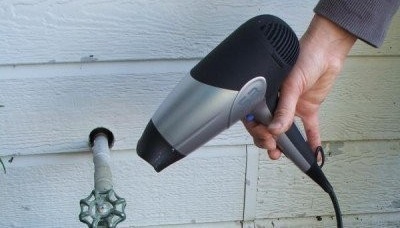
The solution to the problem of defrosting the water pipe with a conventional hairdryer, but you can use the construction
With a small freezing of the pipe, you can use a household hair dryer or fan heater to heat it. If there are turns, contractions, or fittings entrances, they also need to be warmed up, since ice can get stuck there. And in this case, do not forget to leave the tap open.
Method 3. Electric current comes to the rescue
How to warm a frozen water pipe using electric current?
Metal water heating can be made using a welding transformer: the positive wire is connected to one end of the pipe, and the negative wire to the second. In such a simple way, the problem can be solved in a few minutes: the ice plug will melt.
Plastic pipe heating can be performed using a two-core copper wire with a cross section of 2.5 mm. This method is similar to the principle of operation of a familiar home boiler. Veins of a wire disconnect. One of them is simply bent, and the second is exposed and twisted 3-5 turns around the wire, cutting off the excess end. The same thing is done with the first core, retreating 2-3 millimeters from the turns of the second core. You need to pay attention so that the wires do not touch, otherwise a short circuit will result. A plug is connected to the other end of the wire. The wire is pushed into the plastic pipe and plugged into the electrical network. Passing through the water, the current heats it, and the ice begins to melt. The method is good in that only water is heated, the wires remain cold and this prevents the accidental melting of a plastic pipe. To quickly blow melt water, you will need an additional compressor.
Method 4. We heat the pipeline with improvised means from the inside
How to warm the water supply, if it has many bends and sections? For this case, you can build a special device. You will need a wire, a hydraulic level tube, Esmarch’s medical mug (in an simple way - an enema), which consists of a rubber container with a rubber hose and a small faucet to drain the water. The hydraulic level tube is fastened to the wire using electrical tape so that the end of the tube is slightly longer than the wire. Push it into the water supply until it stops. Hot water flows from the rubber tank into the pipeline. It is necessary to organize the collection of melt water.
As the ice melts, the tube with the wire is pushed further. The process of warming up a frozen water supply with improvised means is quite laborious and requires a lot of patience and time (about 1 hour per one meter of a frozen pipe), but the costs are minimal.
Method 5. Call specialists
It is also possible to warm the water pipe from the inside with the help of special equipment - a hydrodynamic installation, whose direct purpose is the preventive washing of water and sewer pipes.
Hot water with a temperature of 150 degrees is supplied under high pressure (90-100 atm) along the sleeve. The water boiler of the installation runs on diesel fuel, and the unit is powered by a power supply of at least 7 kW and a voltage of 380V. For this method, it is necessary to call specialists, so this method is not suitable for everyone.
How to prevent pipeline freezing?
First of all, pipes should be laid taking into account the type of soil and the depth of its freezing. To avoid freezing, it is best to lay the pipe at a depth of at least 2 m. Well, if this is not possible, then you need to make high-quality thermal insulation of the pipeline or think about using a special heating self-regulating electric cable, which is turned on if necessary. In addition, all leaks must be fixed.
It's important to know! Water often freezes in pipelines of small diameter, therefore, it is recommended to use pipes with a diameter of more than 50 mm for water supply.
Water can freeze in the water supply in places where it passes through the basement or basement, as concrete freezes faster than soil. In such places, the pipe is recommended to be placed in a sleeve (a pipe with a large diameter), and polyurethane foam is injected into the formed voids.
The underground water supply can also be protected from freezing by glassy, mineral wool, polystyrene strips, filling all voids with polyurethane foam.
There is another option that one of the experts will tell you about:
If not all of the above measures have been taken, and frosts are raging on the street, one thing remains - contrary to safety regulations, to leave the crane ajar at night and when no one is at home - the movement of water will prevent the formation of ice.

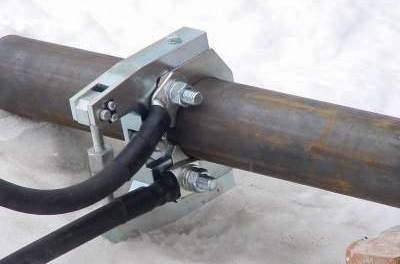


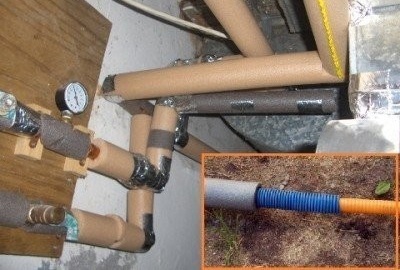

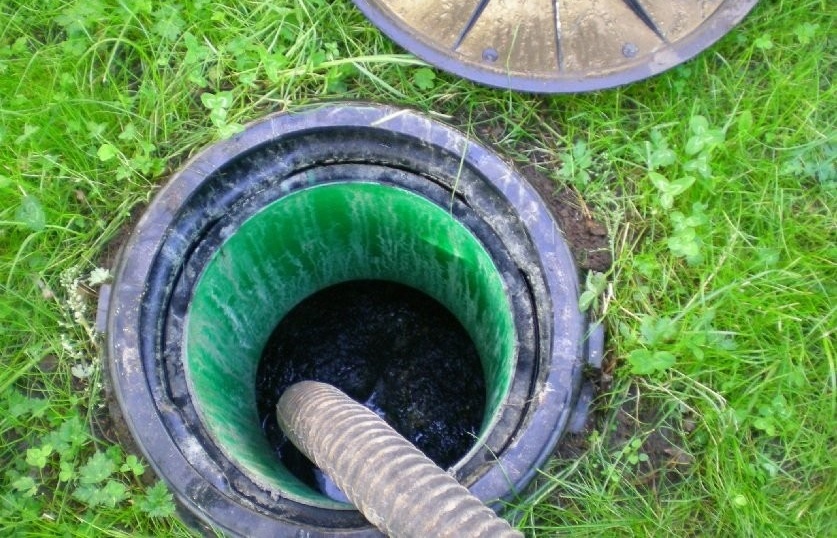
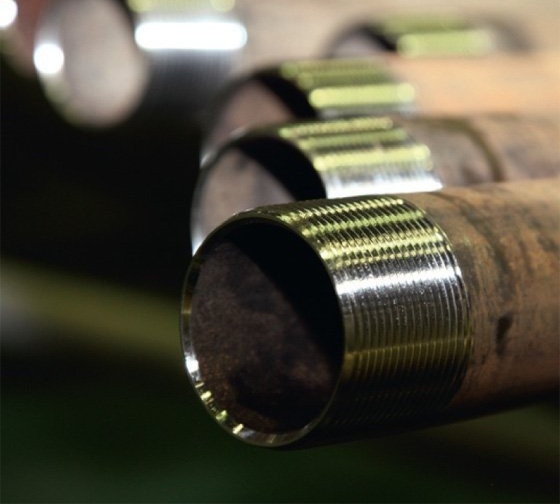
2 comments